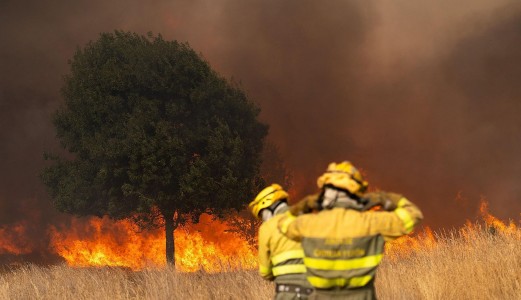Which is the best pump for wildland fires?
Skid units for pick-ups and light vehicles are essential to deploying rapid intervention maneuvers with a water line during a wildland fire. They’re autonomous, can make a difference in the initial evolution of a fire in difficult-to-access remote areas or in urban developments requiring protection; they can offer a response in simultaneous scenarios, preventing collapse and pumping water from a moving vehicle (a big advantage when fighting
wide, low-spread fires).
How do you know which motor pump configuration is best for a particular skid unit? Before answering this question, here are some basic notions of hydraulics.
What types of pumps exist?
Pump types are classified in accordance with the pump geometry (centrifugal, membrane, piston) or the pressure offered:
- Low pressure (10-15 bar)
- High pressure (40-45 bar)
- Very high pressure (50-280 bar)
What pressure and flow are needed during a wildland fire?
Line consumption is around 75-100 L/min. on average. The ideal operating flow is 18-20 liters per minute up to a flame height of 0.5-1 meter. The operating limit with a water line is 3-4 meters of flame height with a performance of 150-180 liters per minute at a pressure of 20 bar. Aerial resources would be needed if the flame height is higher than 4 meters considering the operational limit of 5 meters in flame height.
You don’t need huge flows to work on plant-based flames if you use water where it’s needed (at the base of the flames).
In order for the nozzle tips to work well, the water must reach the fire with 6 bar of pressure for an optimal stream. However, you must remember that the water pressure at the pump outlet is never the same as at the launching point. Certain factors will lead to head losses.
Which factors influence the real performance of a pump?
The longer the system (water line laying) and the greater the positive elevation, the more head loss there will be. There are losses due to friction (maneuver distance from the pump to the launching point) and elevation differences (altitude climbed during the maneuver).
There is 1 bar of loss with every hose connected and one bar of pressure is lost with every 10 meters of elevation difference in the system.
Another factor with a direct impact on head loss is the hose diameter. The shorter the passage section, the higher the loss in pressure. One simple technique for reversing head loss when the system is going to be longer is to lay the first approximation stretches with 45 mm diameter hoses (the head loss factor with this type of hose is quite close to 0.1 bar per 20 m of hose). One must always remember they only work with low pressure (centrifugal pump).
Choosing the most appropriate equipment
One of the most common uses of skid units for light vehicles is a first intervention. An attack cone is usually used in the initial phases, at the launching point, to optimize the way the water is sprayed and cool the base of the flames more efficiently. A skid unit with a centrifugal pump would be the most appropriate choice for this type of maneuver which requires high flows. It would also be the best choice for self-protection maneuvers, protection from radiation and smoke. The voracity of today’s fires, with ever more frequent and dangerous assaults, must not be forgotten. A firefighter can be in the middle of an attack (effective with a flow of 20 L/min) and in just a few minutes be in a situation of entrapment needing a minimum flow of 150 L/min. and 20 bar of pressure. It is perhaps the most versatile choice and also the most resistant (the impulsion geometry lasts longer against impurities that may enter the pump if the tank is filled from a water source that hasn’t been filtered well).
Direct attack maneuvers:

Resupply maneuvers:

Do you have any questions about fire pumps, skid units or performances? Do not hesitate to contact us, our team of experts will be glad to help you: Click here to contact us.






